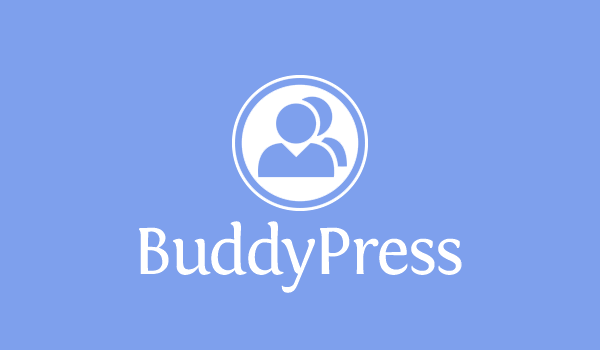If you’re looking to create a social networking website or add community features to your WordPress site, BuddyPress is the ultimate solution. This powerful and free WordPress plugin transforms your site into an interactive platform where users can connect, collaborate, and engage.
Whether for educational communities, business intranets, or niche social networks, BuddyPress offers a feature-rich, customizable, and scalable tool for your needs.
In this article, we’ll cover everything you need to know about BuddyPress, including its features, benefits, use cases, installation, and optimization tips to rank your BuddyPress site higher on search engines.
What is BuddyPress?
BuddyPress is an open-source WordPress plugin designed to create social networking features within a website. It’s widely known for its flexibility, user-friendly interface, and community-focused functionalities. With BuddyPress, you can enable users to create profiles, interact in groups, send private messages, and much more.
Features of BuddyPress
BuddyPress is packed with features to support community building and user engagement. Here’s an overview:
1. User Profiles
BuddyPress allows members to create and manage detailed user profiles. You can customize profile fields to suit the needs of your community.
2. Activity Streams
Activity streams provide real-time updates about what’s happening across the community. Members can post updates, comment on activities, and interact in a dynamic way.
3. Private Messaging
BuddyPress includes a robust private messaging system. This feature allows users to send one-on-one messages securely, promoting direct interactions.
4. Groups
With BuddyPress, users can create public, private, or hidden groups to interact with like-minded individuals. Groups can have their own activity streams and discussions.
5. Friend Connections
Users can connect by sending and accepting friend requests, fostering stronger community ties.
6. Customizable Notifications
BuddyPress offers customizable notifications for user actions such as friend requests, group invitations, or replies to comments.
7. Plugin Compatibility
BuddyPress integrates seamlessly with other WordPress plugins like bbPress (for forums), WooCommerce (for e-commerce), and SEO plugins like Yoast SEO.
Why Use BuddyPress?
1. Free and Open Source
BuddyPress is completely free to download, use, and customize. Its open-source nature means developers can modify its code to meet specific requirements.
2. Easy to Use
Even beginners can set up and configure BuddyPress without technical expertise, thanks to its intuitive dashboard and extensive documentation.
3. Highly Scalable
BuddyPress is suitable for small communities and large-scale networks, making it ideal for businesses, schools, and niche platforms.
4. SEO-Friendly
BuddyPress integrates with WordPress’s SEO tools, ensuring your community gets indexed and ranked by search engines.
Popular Use Cases for BuddyPress
1. Educational Communities
Schools, colleges, and training institutes use BuddyPress to create student communities, facilitate learning, and promote collaboration.
2. Corporate Intranets
Businesses leverage BuddyPress to build internal communication networks, enhancing teamwork and employee engagement.
3. Niche Social Networks
BuddyPress enables the creation of platforms tailored to specific interests, such as fitness groups, hobby forums, or professional associations.
4. Membership Websites
Subscription-based websites can use BuddyPress to offer exclusive community features for members.
How to Install and Configure BuddyPress
Setting up BuddyPress on your WordPress site is simple. Follow these steps:
1. Install BuddyPress
Log in to your WordPress dashboard.
Navigate to Plugins > Add New.
Search for “BuddyPress” and click Install Now.
2. Activate the Plugin
After installation, activate BuddyPress to access its features.
3. Configure Components
Go to Settings > BuddyPress and enable or disable specific components such as activity streams, groups, or messaging.
4. Customize Profile Fields
Use the Profile Field Editor to add custom fields to user profiles.
5. Choose a Compatible Theme
Opt for themes optimized for BuddyPress, such as BuddyBoss, Kleo, or Reign.
Best Practices for Optimizing Your BuddyPress Site
1. Mobile-Friendly Design
Ensure your site is fully responsive for mobile devices to improve user experience and SEO rankings.
2. Leverage SEO Plugins
Use plugins like Yoast SEO or Rank Math to optimize your BuddyPress pages for search engines.
3. Improve Site Speed
Use caching plugins like WP Rocket or enable a CDN to enhance page load times.
4. Regular Updates
Keep BuddyPress and WordPress updated to ensure compatibility and security.
5. Engaging Content
Post regular content updates to keep members active and engaged.
Conclusion
BuddyPress is the go-to solution for anyone looking to create an interactive social network on WordPress. Its robust features, extensive customization options, and seamless integrations make it a top choice for building communities. Whether you’re launching a niche network or a corporate intranet, BuddyPress can help you foster meaningful interactions and engagement.





